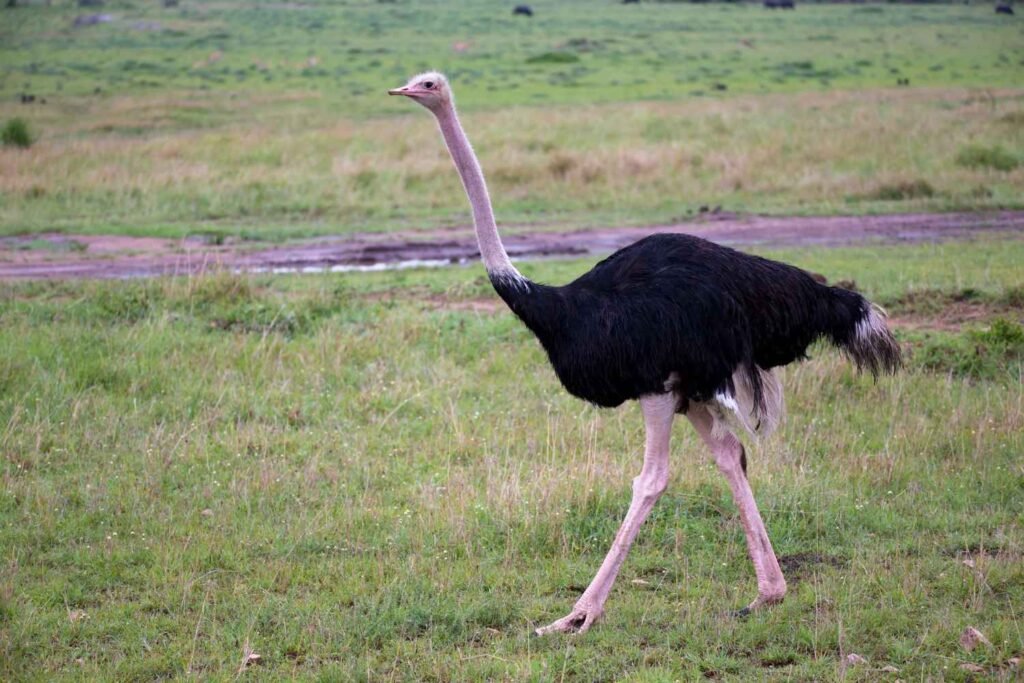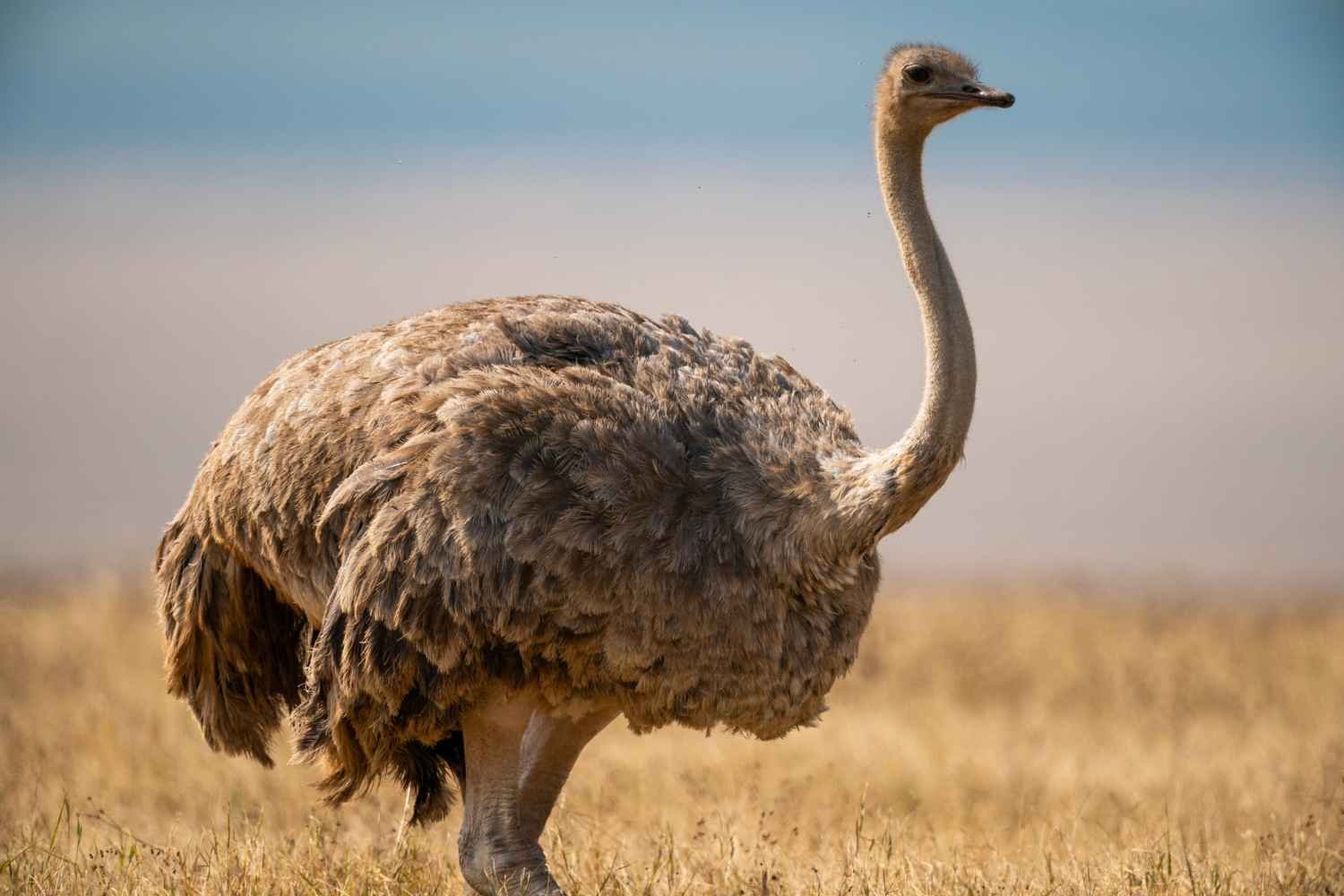In the class of tetrapods the birds are warm-blooded vertebrates. They exist in all types of habitat and on all continents including Antarctica, a region which is known to be one of the coldest on the planet. They have feathers and the ability to fly, although not all of them fly as some have lost this ability. In the world of birds there is very much variation in morphology, feather color and size, beak shapes, and modes of feeding. Do you know the different types of birds that exist and their characteristics ? If you want to know more about this wonderful group of animals, continue reading this article where we will tell you about the types of birds present in each part of the world and their most curious details.
Bird characteristics

Birds are the closest descendants of dinosaurs, which inhabited Earth about 200 million years ago, in the Jurassic period. As we mentioned, they are endothermic (warm-blooded) animals that have feathers that cover their entire body, a horny beak (with keratin cells) and do not have teeth. Their forelimbs are adapted for flight and, in the case of flightless bird species such as ostriches, kiwis or penguins, their hind limbs are adapted for running, walking or swimming. Its particular anatomy has various adaptations, most related to flight and its particular ways of life. They have the following characteristics:
- Light skeleton : skeleton with very light and hollow bones that give them lightness during flight.
- Developed vision : they also have very large orbitals (cavities where the eyes are housed), so their vision is highly developed.
- Horny beak : birds have a horny beak with many variants depending on the species and the way they feed.
- Syrinx : They also have a syrinx, which is part of their oral apparatus and through which they can make sounds and sing.
- Crop and gizzard : they have a crop (dilation of the esophagus) that serves to store food before digestion, and on the other hand a gizzard, which is part of the stomach and is responsible for crushing the food, often with the help of small stones that the bird swallows for that purpose.
- They do not urinate : they do not have a urinary bladder, so uric acid (waste from the birds’ kidneys) is excreted along with the rest of the waste in the form of semi-solid feces.
- Fused bones : fusion of vertebrae, fusion of hip bones, and variations in the sternum and ribs to accommodate flight muscles.
- Four fingers : the legs have 4 fingers in most species, which have a different arrangement depending on the way of life they lead.
- Pellets or pellets : many species form pellets, small vomited concretions formed by undigested animal remains.
- They lay eggs : as we mentioned previously, their reproductive form is by internal fertilization and they lay dry calcareous eggs that they incubate in the nests, and many species lose their breast feathers during the incubation season in order to provide more heat to the egg.
- They can be born with or without feathers : the newly hatched babies (when they come out of the egg) can be altricial, that is, they do not yet have down for their protection and must remain in the nest for longer in the care of the parents. On the other hand, they can be precocious, when they are born with down feathers that protect their body, therefore, they spend less time in the nest.
- Accelerated digestion and metabolism : having a high and accelerated metabolism and digestion are also adaptations related to flight.
- Special respiration : very particular respiratory system, since they have lungs with air sacs that allow a constant flow of air.
- Developed nervous system : they have a highly developed nervous system, especially the brain, which is related to flight functions.
- Varied diet : related to their diet, there is a wide variation depending on the species, being able to consume seeds, fruits and flowers, leaves, insects, carrion (animal remains) and nectar, which will be directly related to their lifestyles.
- Long migrations : many marine species, such as the sooty shearwater ( Ardenna grisea ) have the ability to carry out migrations that are as long as they are spectacular, reaching more than 900 km a day. Find out here which are the migratory birds .
Types of birds
There are more than 10,000 species around the world , and most of them have diversified during the Cretaceous period, about 145 million years ago. Currently they are grouped into two large lineages:
Palaeognathae : with around 50 species distributed mainly in the southern hemisphere,
Neognathae : composed of the rest of the species present on all continents.
Examples of Palaeognathae birds

Within the types of Palaeognathae birds, there are:
The ostrich ( Struthio camelus ): is the largest bird that we can find today and the fastest runner. It is present in sub-Saharan Africa.
Rheas : like Rhea Americana , similar to ostriches, although smaller. They have lost the ability to fly and are also excellent runners and are present in South America.
The tinamids : such as Tinamus major also present in Central and South America. They are walking birds and make short flights when they feel threatened.
Cassowaries : such as Casuarius casuarius present in Australia and New Guinea, and the emu Dromaius novaehollandiae , present in Oceania. Both have also lost the ability to fly and are walkers or runners.
Kiwis : endemic (only present at one site) to New Zealand, such as Apteryx owenii . They are small birds with a globose shape and terrestrial habits.
Examples of Neognathae birds

The Neognathae comprise the most diverse and numerous group of current birds, so we will name their most well-known or striking representatives. Here we can find:
Chickens : such as Gallus gallus , present throughout the world.
Ducks : such as Anas sivilatrix , present in South America.
Pigeons : like Columba livia , also widely distributed, since it is present in much of the world.
Cuckoos : like the common cuckoo Cuculus canorus , so curious to practice brood parasitism, where females lay their eggs in the nests of other bird species. The roadrunner Geococcyx californianus is also found here , curious for its terrestrial feeding habits.
Cranes : with examples such as Grus grus with its large size and the ability to migrate great distances.
Seagulls : for example Larus occidentalis , medium-sized seabirds with one of the largest wingspans (distance from tip to tip of the wings).
Birds of prey : such as the golden eagle, Aquila chrysaetos , a large species and an excellent flyer, and owls and owls, such as the snowy owl Aquila chrysaetos , characteristic for its white plumage.
Penguins : with representatives that can reach 1.20 m in height, such as the emperor penguin ( Aptenodytes forsteri ).
Herons : like Ardea alba , widely distributed in the world and one of the largest of its group.
Hummingbirds : with tiny representatives such as Mellisuga helenae , considered the smallest bird in the world.
Kingfisher – like Alcedo atthis , so striking for its bright colors and excellent fishing ability.
Also Read: 15 Types of parrots




